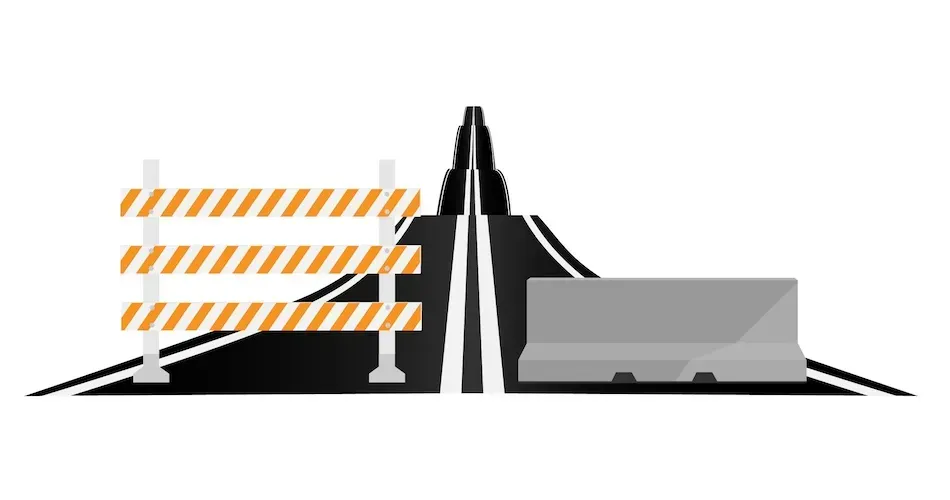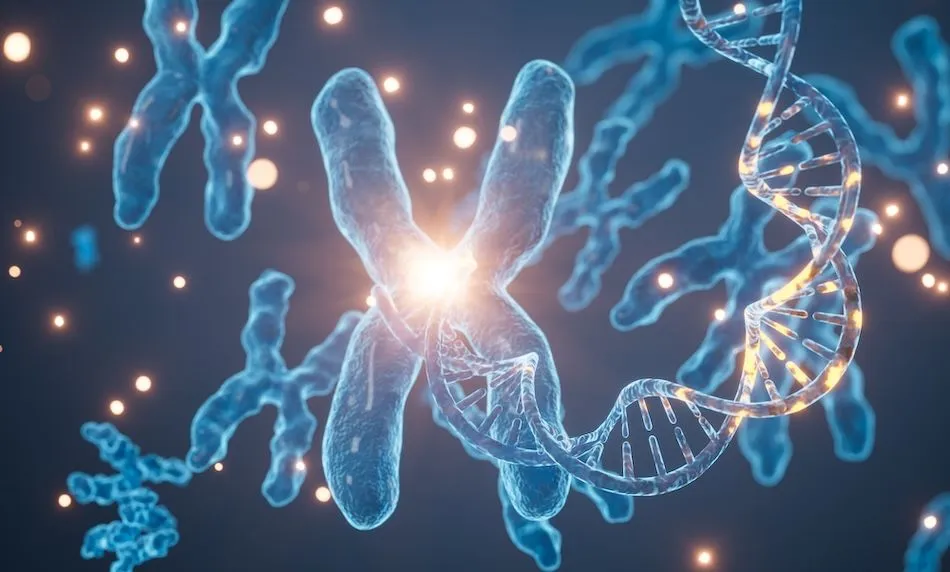ASH 2020: Data Supports Transplant As Backbone of Therapy in Myeloma, or Does It?

This is Part One of a series of articles on Autologous Stem Cell Transplant and the current research emerging from ASH 2020.
The debate over if and when to use Autologous Stem Cell Transplant (ASCT) is ongoing, however strong data was presented at this conference supporting its value in myeloma treatment. The updated results of the FORTE trial and IFM 2009 trial were among the abstracts selected as most important by many myeloma specialists.
Key takeaways from the presentations below are that:
- Transplant can extend progression free survival
- Early vs. late transplant may not differ in overall survival
- Having extended progression free survival may help achieve long lasting remissions until new treatments can be developed
- What is used as induction before transplant matters significantly - some combinations have worse outcomes than not including transplant at all
- Adding Kyprolis to Revlimid for maintenance after transplant helped achieve stronger results
- MRD negative patients (with or without transplant) do better in the long run
- Transplant increases MRD negativity
The FORTE data confirms that in frontline therapy for New Diagnosed Multiple Myeloma (NDMM) the addition of ASCT does significantly increase Progression Free Survival (PFS), which we think of as "remission". The IFM 2009 trial data accrued over 8 years shows that frontline ASCT and delayed ASCT confer the same Overall Survival (OS). An attempt to compare frontline ASCT to no transplant was confounded by the fact that about 75% of patients who had not received upfront transplant, were allowed to crossover and underwent delayed transplant.
Abstract # 141: Survival Analysis of Newly Diagnosed Transplant-Eligible Multiple Myeloma Patients in the Randomized Forte Trial
https://ash.confex.com/ash/2020/webprogram/Paper136907.html
Dr. Francesa Gay of GIMEMA, European Network, Italy presented. This trial which included two randomizations is best described by her trial design slide.
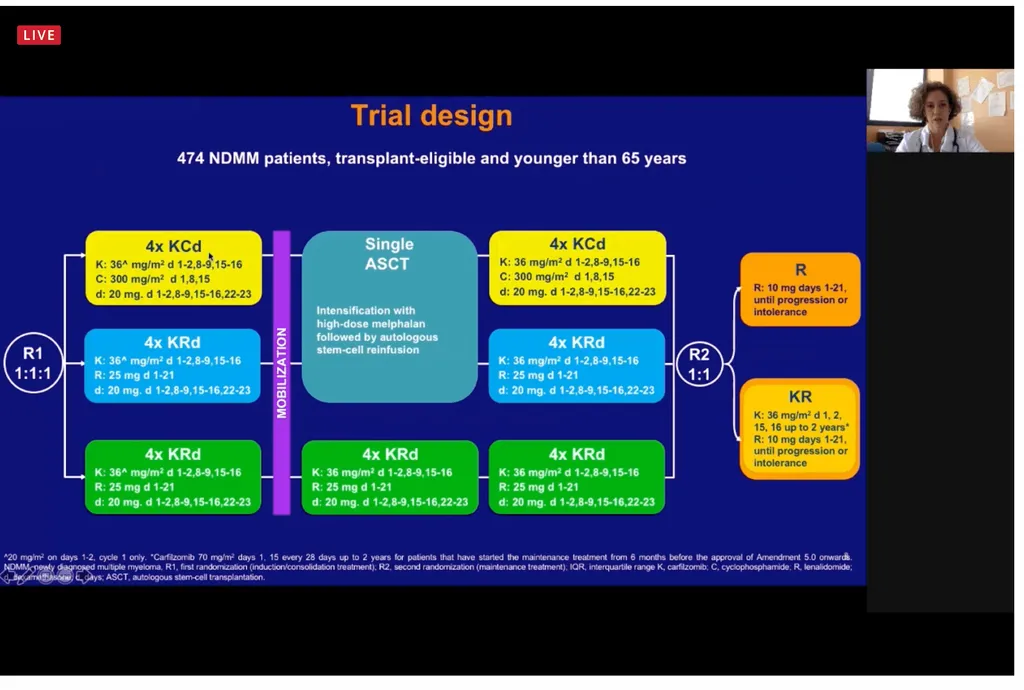
Key goals of this analysis included a comparison of the Progression Free Survival (PFS) for all three pre-maintenance treatment arms and the PFS of the two maintenance arms. The PFS data can be seen in the graphs below which show a clear benefit at 45 months for KRD_ASCT arm 78% vs KRd 12 of 66%. This benefit was observed in most subgroups.
We also see a Minimal Residual Disease (MRD) 10-5 benefit for KRD_ASCT in pre- maintenance minimal residual disease (MRD) negativity and even more importantly we see a sustained MRD negative benefit for KRD_ASCT 68% vs KRd 54%.
Additional MRD data as well as a discussion on MRD can be seen in this Myeloma Crowd article.
What you will notice in the slides below is that the choice of induction therapy matters significantly. Using KCd induction plus transplant had a worse out come than using no transplant at all.
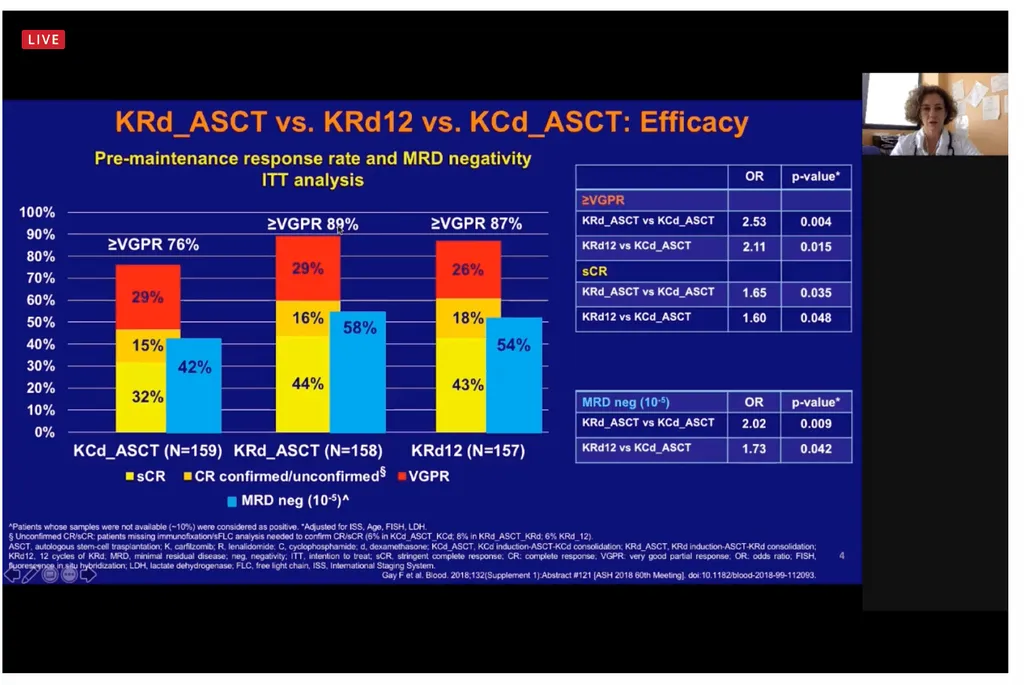
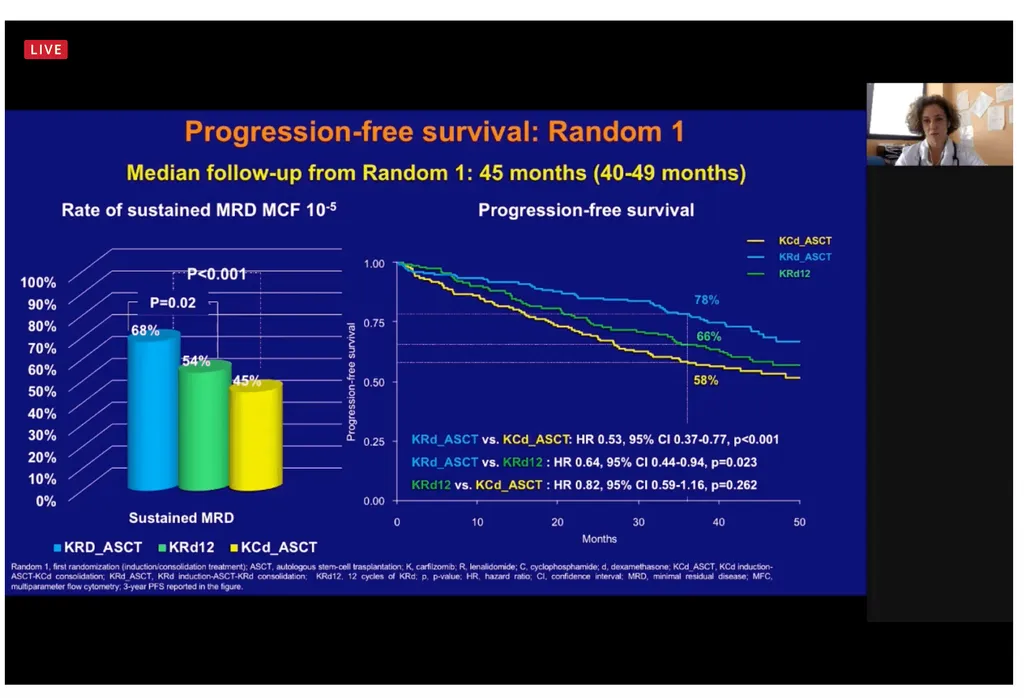
During the maintenance stage, Kyprolis/Revliimd was compared to Revlimid alone. While the hematologic toxicities of the two arms were similar, with the most common being neutropenia and thrombocytopenia, the Grade 3-4 non-hematologic serious adverse events was higher with KR 27% vs R 15% and the most common were infections. The rate of cardiac side effects was KR 4% vs R 1%.
Conclusions
Dr. Gay concluded that:
- KRD with transplant was the best option with a 3-year progression free survival of 78%
- KRD with transplant was consistently the best even across all genetic myeloma types (standard risk PFS 80-84% and high risk 69-72%)
- KR maintenance was better for longer progression free survival (30 months for 81% of patients)
- KR was tolerable as maintenance
Abstract #143: Early vs Late Autologous Stem Cell transplant in Newly Diagnosed multiple Myeloma: Long-Term Follow-up Analysis of the IFM 2009 Trial (Intergroupe Francophone du Myelome)
https://ash.confex.com/ash/2020/webprogram/Paper134538.html
This study was done in partnership with Dana Farber Cancer Institute (DFCI). The study presented by Dr. Aurore Perrot compared RVD vs. RVD with stem cell transplant. The French study only included Revlimid maintenance for one year.
In June 2015, results at 44 months showed a median progression free survival for the transplant arm of 50 months vs 36 months for the (RVD) only arm. The more current 90.8 month read out the transplant arm shows a reduction in the risk of progression or death of 30%. After 8 years, the good news is that over 60% of patients are alive in both arms.
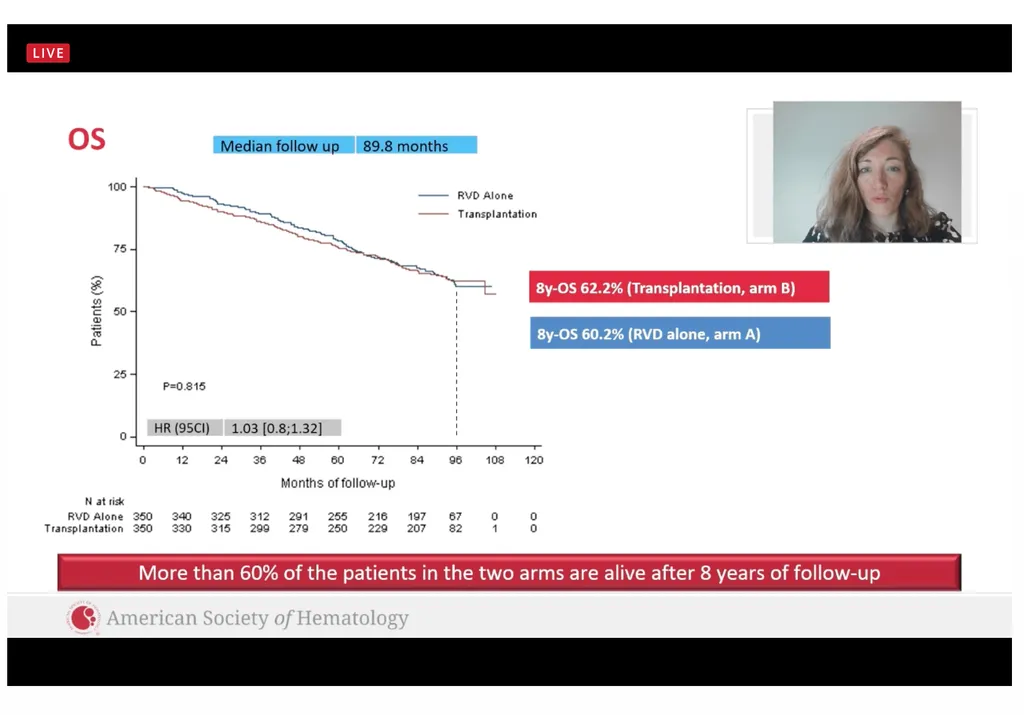
Once again we see that with or without transplantation MRD negative patients do better.
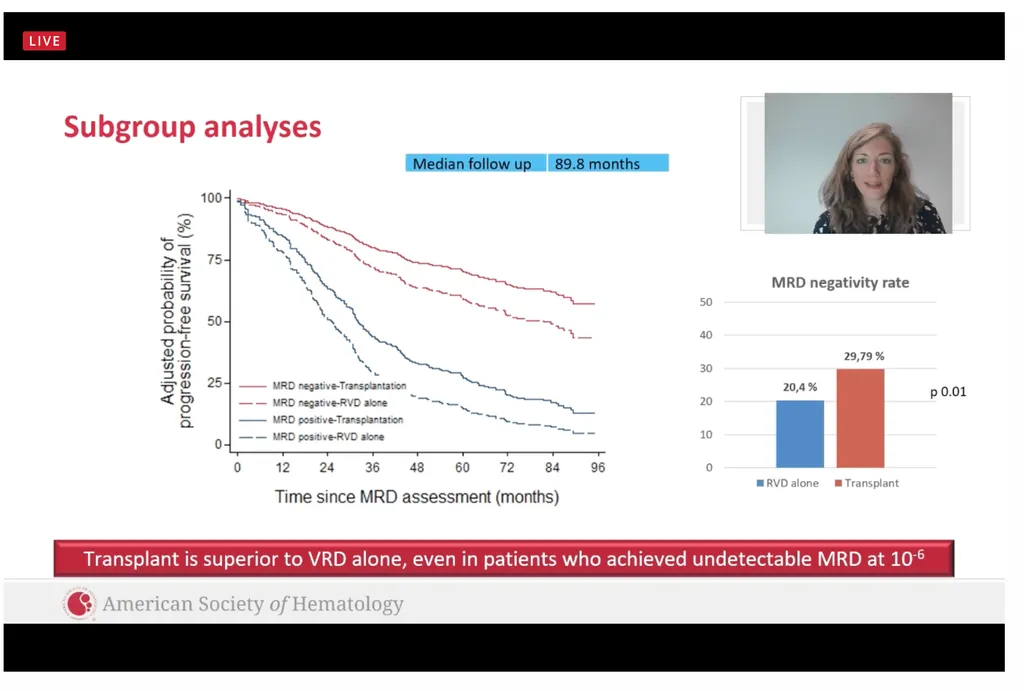
Conclusions
Dr. Aurore Perrot concluded that:
- Transplant significantly reduced the risk of progression or death by 30% compared to RVd alone
- Frontline transplant remains the first choice for newly diagnosed myeloma
- 35% of patients in the transplant arm didn't relapse until after 8 years
- More patients achieved MRD negativity with transplant
- Combining transplant with quad therapies may be the best strategy
Data is subject to interpretation, and our myeloma specialists fall into two camps although they all agree decisions should be made with the patient. Some see this data as confirmation that ASCT is still the backbone of myeloma treatment, whether it is part of first line treatment or at first relapse, although preferably as part of frontline therapy as there is patient attrition with successive lines of therapy.
There is also a growing camp who want to take advantage of the overall survival data to favor delay of transplant and allow for the possibility of future treatment with less toxic novel agents. This approach is actually supported in the conclusion of the IFM abstract "MRD appears to predict outcome and might be used after induction to identify those patients who probably do not require a transplant." This however requires a deep dive into Minimal Residual Disease (MRD) a subject unto itself. You can read more about the ASH discussion of MRD here.
So, if and when the time comes to decide whether or not to proceed with a transplant, how will you decide? In Part Two of this article series, we'll look more closely at melphalan, the high dose chemotherapy which is the basis for ASCT. We'll also look at the issues and questions you'll want to think about and discuss with your myeloma specialist.
Bonnie shares her experience and knowledge of myeloma as a Myeloma Coach. To learn more about the Coaching program and to find and connect with a Coach- visit our website: www.myelomacoach.org.
This is Part One of a series of articles on Autologous Stem Cell Transplant and the current research emerging from ASH 2020.
The debate over if and when to use Autologous Stem Cell Transplant (ASCT) is ongoing, however strong data was presented at this conference supporting its value in myeloma treatment. The updated results of the FORTE trial and IFM 2009 trial were among the abstracts selected as most important by many myeloma specialists.
Key takeaways from the presentations below are that:
- Transplant can extend progression free survival
- Early vs. late transplant may not differ in overall survival
- Having extended progression free survival may help achieve long lasting remissions until new treatments can be developed
- What is used as induction before transplant matters significantly - some combinations have worse outcomes than not including transplant at all
- Adding Kyprolis to Revlimid for maintenance after transplant helped achieve stronger results
- MRD negative patients (with or without transplant) do better in the long run
- Transplant increases MRD negativity
The FORTE data confirms that in frontline therapy for New Diagnosed Multiple Myeloma (NDMM) the addition of ASCT does significantly increase Progression Free Survival (PFS), which we think of as "remission". The IFM 2009 trial data accrued over 8 years shows that frontline ASCT and delayed ASCT confer the same Overall Survival (OS). An attempt to compare frontline ASCT to no transplant was confounded by the fact that about 75% of patients who had not received upfront transplant, were allowed to crossover and underwent delayed transplant.
Abstract # 141: Survival Analysis of Newly Diagnosed Transplant-Eligible Multiple Myeloma Patients in the Randomized Forte Trial
https://ash.confex.com/ash/2020/webprogram/Paper136907.html
Dr. Francesa Gay of GIMEMA, European Network, Italy presented. This trial which included two randomizations is best described by her trial design slide.

Key goals of this analysis included a comparison of the Progression Free Survival (PFS) for all three pre-maintenance treatment arms and the PFS of the two maintenance arms. The PFS data can be seen in the graphs below which show a clear benefit at 45 months for KRD_ASCT arm 78% vs KRd 12 of 66%. This benefit was observed in most subgroups.
We also see a Minimal Residual Disease (MRD) 10-5 benefit for KRD_ASCT in pre- maintenance minimal residual disease (MRD) negativity and even more importantly we see a sustained MRD negative benefit for KRD_ASCT 68% vs KRd 54%.
Additional MRD data as well as a discussion on MRD can be seen in this Myeloma Crowd article.
What you will notice in the slides below is that the choice of induction therapy matters significantly. Using KCd induction plus transplant had a worse out come than using no transplant at all.


During the maintenance stage, Kyprolis/Revliimd was compared to Revlimid alone. While the hematologic toxicities of the two arms were similar, with the most common being neutropenia and thrombocytopenia, the Grade 3-4 non-hematologic serious adverse events was higher with KR 27% vs R 15% and the most common were infections. The rate of cardiac side effects was KR 4% vs R 1%.
Conclusions
Dr. Gay concluded that:
- KRD with transplant was the best option with a 3-year progression free survival of 78%
- KRD with transplant was consistently the best even across all genetic myeloma types (standard risk PFS 80-84% and high risk 69-72%)
- KR maintenance was better for longer progression free survival (30 months for 81% of patients)
- KR was tolerable as maintenance
Abstract #143: Early vs Late Autologous Stem Cell transplant in Newly Diagnosed multiple Myeloma: Long-Term Follow-up Analysis of the IFM 2009 Trial (Intergroupe Francophone du Myelome)
https://ash.confex.com/ash/2020/webprogram/Paper134538.html
This study was done in partnership with Dana Farber Cancer Institute (DFCI). The study presented by Dr. Aurore Perrot compared RVD vs. RVD with stem cell transplant. The French study only included Revlimid maintenance for one year.
In June 2015, results at 44 months showed a median progression free survival for the transplant arm of 50 months vs 36 months for the (RVD) only arm. The more current 90.8 month read out the transplant arm shows a reduction in the risk of progression or death of 30%. After 8 years, the good news is that over 60% of patients are alive in both arms.

Once again we see that with or without transplantation MRD negative patients do better.

Conclusions
Dr. Aurore Perrot concluded that:
- Transplant significantly reduced the risk of progression or death by 30% compared to RVd alone
- Frontline transplant remains the first choice for newly diagnosed myeloma
- 35% of patients in the transplant arm didn't relapse until after 8 years
- More patients achieved MRD negativity with transplant
- Combining transplant with quad therapies may be the best strategy
Data is subject to interpretation, and our myeloma specialists fall into two camps although they all agree decisions should be made with the patient. Some see this data as confirmation that ASCT is still the backbone of myeloma treatment, whether it is part of first line treatment or at first relapse, although preferably as part of frontline therapy as there is patient attrition with successive lines of therapy.
There is also a growing camp who want to take advantage of the overall survival data to favor delay of transplant and allow for the possibility of future treatment with less toxic novel agents. This approach is actually supported in the conclusion of the IFM abstract "MRD appears to predict outcome and might be used after induction to identify those patients who probably do not require a transplant." This however requires a deep dive into Minimal Residual Disease (MRD) a subject unto itself. You can read more about the ASH discussion of MRD here.
So, if and when the time comes to decide whether or not to proceed with a transplant, how will you decide? In Part Two of this article series, we'll look more closely at melphalan, the high dose chemotherapy which is the basis for ASCT. We'll also look at the issues and questions you'll want to think about and discuss with your myeloma specialist.
Bonnie shares her experience and knowledge of myeloma as a Myeloma Coach. To learn more about the Coaching program and to find and connect with a Coach- visit our website: www.myelomacoach.org.

about the author
Bonnie Falbo
Bonnie is a Myeloma Coach and the caregiver for her husband with Multiple Myeloma. They live at the foot of the Blue Ridge Mountains in Afton, VA with their 2 dogs and 2 cats.
More on Conferences
Trending Articles




Get the Latest Multiple Myeloma Updates, Delivered to You.
By subscribing to the HealthTree newsletter, you'll receive the latest research, treatment updates, and expert insights to help you navigate your health.
Together we care.
Together we cure.
3x Faster.



